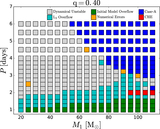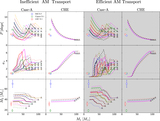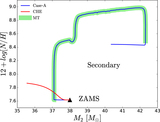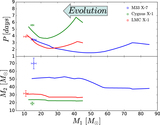Image Details
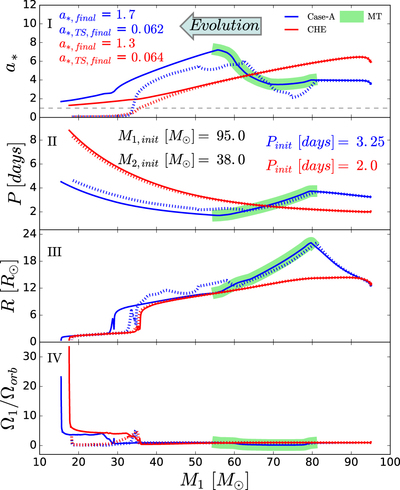
Caption: Figure 1.
Spin parameter a* (I), orbital period (II), primary’s radius (III), and rotational frequency ratio of primary to the orbit (IV) as a function of primary mass for two binary evolutionary sequences starting with same initial masses of two components but different initial orbital periods. The sequence with the longer initial period (Pinit = 3.25 days; blue line) evolves via the Case-A MT, while the one with the shorter initial period (Pinit = 2.0 days; red line) evolves via the CHE. Green shading represents the MT phase for the Case-A MT channel. The gray dashed line in the top panel indicates the theoretical maximum spin (i.e., a* = 1) of a BH and the arrow represents the direction of the evolution along the time. In both cases, assuming direct collapse, the BH progenitor star has enough AM to form a maximally spinning BH when it reaches core carbon depletion. For comparison, the dotted lines represent the same sequences but with an efficient AM transport mechanism.
Copyright and Terms & Conditions
© 2019. The American Astronomical Society. All rights reserved.


